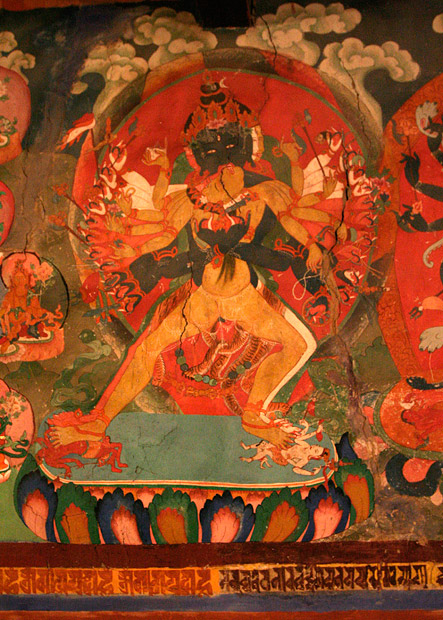Ladakh: Glossary of Terms in Buddhist Iconography
Continuing my series of stories on Ladakh, I will be writing in upcoming posts about monasteries that I visited. It would be useful to know a few terms often associated with Ladakhi Buddhism and Tibetan iconography before reading them. I will be using these terms very often in the posts about monasteries. More terms may be added as necessary. Come back to this post for references where needed.
Avalokitesvara. The Buddha of compassion with thousand arms to help the sentient beings.
Chorten. A Chorten or a Stupa is a holy structure with three parts – a square bottom, a circular middle section and a thin cylindrical top portion. On the top of it will be a crescent moon and a disc. Chortens are installed on the approach to monasteries and outside the village. They are meant to ward off evil.
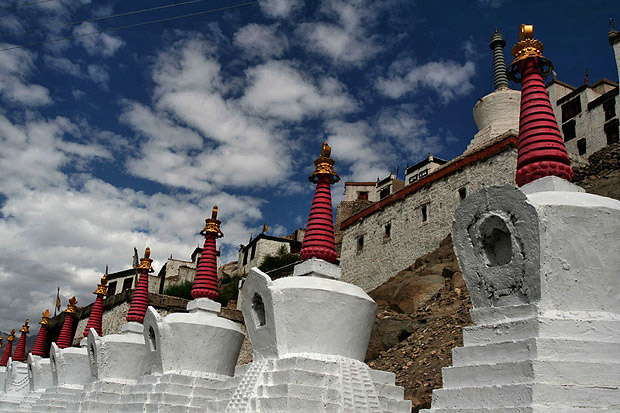
A series of Chortens.
Drukpa. A sect of Tibetan Buddhism, also referred to as Red Hat. The monasteries in Lamayuru and Hemis are among the prominent monasteries of this sect.
du-khang. The prayer hall of the monastery, often with richly decorated interiors and murals along the walls.
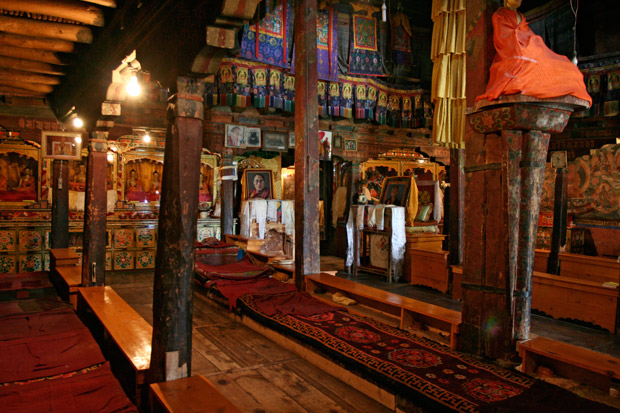
The du-khang in a monastery in Ladakh
Gelugpa. A sect of Tibetan Buddhism, also referred to as Yellow Hat. The monks of Gelugpa sect wear a tall yellow hat during special ceremonies and festivals. Most monasteries in Ladakh belong to this sect. Dalai Lama belongs to Gelugpa order.
Gompa. Ladakhi term for a monastery. Celibate monks (lama) live here and study the religious scriptures and meditation. Usually every village will have a gompa on a crag overlooking the entire village. Villagers use religious services of lamas from the monastery and often donate in cash or kind in return.
gon-khang. Gon-Khang or the room of guardian deities is a place of worship in the monastery that houses many demonic figures. Sometimes the deities are veiled. Some monasteries do not permit women inside gon-khang.
Mani wall. A thick wall built by loosely bound stones, often seen along the roads in a Ladakhi village. The stones will have ‘Om Mani Padmeham’ or other Tibetan mantras inscribed on them. One must always walk keeping the Mani wall to the right.
Manjushri. Manjushri is a Bodhisattva (emanating enlightened being) associated with awareness.
Tara. A female deity. Tara is usually painted in prayer halls as Green Tara or White Tara.

A statue of Tara
Torma. A material for worship made by kneading tsampa(barley flour) in to conical shape and decorated with Yak butter and other materials.
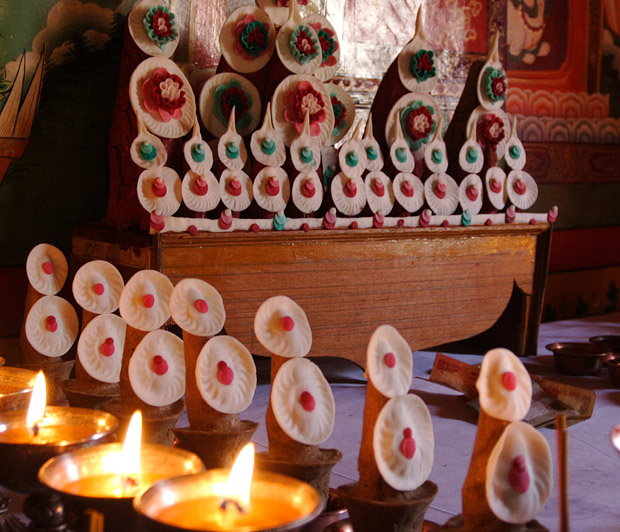
Tson-ka-pa. The lama who founded of Gelugpa sect. His statues and paintings can be seen in many monasteries that belong to Gelugpa sect.
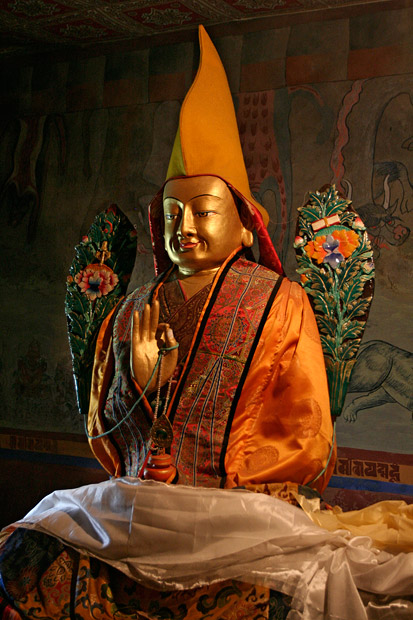
A statue of Tsonkapa
Wheel of Life. A complex painting often seen on the walls of monasteries, representing various levels of life according to Tibetan Buddhism.
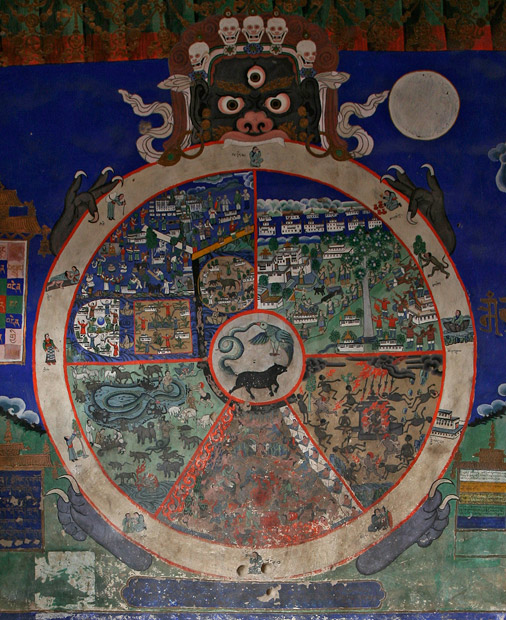
Yab Yum. A Tibetan Buddhist deity with multiple hands, always portrayed in union with a female deity. Paintings of Yab Yum can be seen in the prayer halls of the monasteries.
